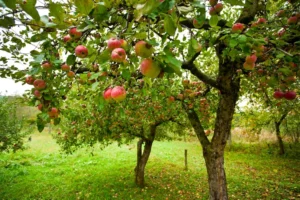
Black marble has long been revered for its beauty and durability. In recent years, advancements in black marble fine technology have further enhanced its appeal across various industries. This article delves into the historical context, composition, manufacturing processes, applications, market trends, environmental impacts, and more, offering a comprehensive view of black marble fine technology.
Introduction to Black Marble Fine Technology
The Allure of Black Marble
Black marble, known for its striking appearance, has become a favored material in architecture and design. Its rich hue and distinctive veining evoke a feeling of elegance and refinement. With the rise of fine technology, the applications of black marble have expanded beyond traditional uses to include innovative solutions in various sectors.
Importance in Design and Engineering
The fusion of aesthetics and functionality makes black marble an ideal choice for both decorative and structural purposes. Its adaptability has led to an increase in demand, driving innovations in processing and application.
Historical Context
Origins of Black Marble in Architecture
Black marble has a rich history that dates back to ancient civilizations. It was used in monumental buildings, sculptures, and decorative elements, symbolizing power and elegance. Iconic structures featuring black marble include the Taj Mahal and various ancient Roman temples.
Evolution of Marble Technology
The methods used for extracting and processing marble have advanced considerably over time. From simple hand tools to advanced machinery, these advancements have improved the efficiency and quality of black marble production, paving the way for its contemporary applications.
Composition and Properties
Geological Formation of Black Marble
Black marble is a metamorphic rock, primarily composed of calcite or dolomite. Its unique color is attributed to the presence of various minerals, including graphite and iron. The geological conditions under which black marble forms contribute to its distinctive patterns and durability.
Physical Properties
Black marble boasts several noteworthy physical properties:
- Hardness: Rated 3-4 on the Mohs scale, making it suitable for various applications.
- Density: Provides durability against wear and tear, making it perfect for high-traffic spaces.
- Temperature Resistance: Naturally heat-resistant, making it a popular choice for kitchen countertops.
Aesthetic Qualities
The visual appeal of black marble is unparalleled. Its deep, rich color combined with intricate veining patterns can elevate any space, providing a timeless elegance that suits both modern and classical designs.
Technological Enhancements
Recent advancements in treatment processes have further improved the durability and maintenance of black marble. Treatments such as sealing and polishing enhance its shine and stain resistance, making it more practical for everyday use.
Manufacturing Processes

Quarrying Techniques
The extraction of black marble involves careful quarrying techniques to minimize waste and preserve the quality of the stone. Advancements in technology have allowed for more accurate cutting and extraction, minimizing the environmental footprint of mining activities.
Cutting and Finishing Methods
The cutting process has also seen significant advancements. Water jet cutting and CNC machining allow for intricate designs and shapes, ensuring that every piece of black marble can be customized to meet specific design requirements.
Innovations in Machinery
The introduction of automated machinery has streamlined the manufacturing process, resulting in faster production times and consistent quality. This technological evolution has made black marble more accessible for a wider range of applications.
Sustainable Practices in Production
As sustainability gains greater significance, numerous manufacturers are embracing environmentally friendly practices. These include responsible sourcing, recycling waste materials, and utilizing energy-efficient machinery.
Applications of Black Marble Fine Technology
Architectural Uses
Interior Design
Black marble is a favored option for countertops, flooring, and wall coverings. Its luxurious appearance enhances the aesthetics of kitchens, bathrooms, and living spaces, making it a favored material among interior designers.
Exterior Applications
The durability of black marble makes it suitable for exterior applications, including facades, landscaping, and outdoor sculptures. Its ability to withstand weather elements while maintaining its beauty makes it an excellent choice for outdoor designs.
Art and Sculpture
Black marble has historically served as a favored medium for artists. Renowned sculptures, such as Michelangelo’s “David,” showcase the material’s ability to convey depth and emotion. Modern artists continue to explore black marble, incorporating it into contemporary works.
Technological Applications
Electronics
In the realm of technology, black marble’s heat resistance makes it ideal for certain electronic components. Its ability to withstand high temperatures is advantageous in environments where thermal management is crucial.
Biotechnological Applications
Black marble is also making its mark in biotechnology, particularly in laboratory settings. Its non-porous surface is easy to clean and sterilize, making it suitable for various laboratory applications.
For more interesting blogs, visit our site: https://futuretrendz.co.uk/
Market Trends

Current Market Analysis
The global market for black marble has seen steady growth, driven by its popularity in residential and commercial sectors. With increasing disposable income and a growing interest in luxury home decor, the demand for black marble continues to rise.
Key Players and Industry Leaders
Several companies have established themselves as leaders in black marble production and innovation. These include:
- Marble Italia
- China National Building Material Group
- Marmi Bruno Zanet
Future Predictions
Looking ahead, the market for black marble is expected to expand further. Emerging markets, particularly in Asia and the Middle East, are projected to drive demand as urbanization and infrastructure development continue.
Environmental Impact
Mining and Ecological Concerns
While black marble is a natural resource, its extraction can have significant environmental impacts, including habitat destruction and increased carbon emissions. Responsible mining practices are essential to mitigate these effects.
Advances in Sustainable Practices
The industry is increasingly focused on sustainability, with many companies implementing measures to reduce their ecological footprint. This includes responsible sourcing, reducing waste, and using renewable energy sources in production.
Lifecycle Analysis
Conducting a lifecycle analysis of black marble products can help identify areas for improvement. From extraction to disposal, understanding the environmental impact at each stage can inform better practices.
Case Studies
Notable Projects Featuring Black Marble
Several iconic projects utilize black marble, showcasing its versatility and elegance. For instance, the Burj Khalifa in Dubai features black marble accents, adding to its luxurious appeal.
Innovations from Industry Leaders
Leading companies are pushing the boundaries of what is possible with black marble. Innovations in design, treatment, and application are expanding its use in both traditional and modern contexts.
Comparative Analysis with Other Materials
Black marble is frequently contrasted with other materials like granite and quartz. Each material has its pros and cons, but black marble stands out for its unique aesthetic and thermal properties.
FAQs
1. What is black marble?
Black marble is a variety of metamorphic rock distinguished by its rich color and distinctive veining, commonly utilized in architectural and design applications.
2. How is black marble processed?
Black marble is extracted from quarries and undergoes cutting and finishing processes using advanced machinery for precision and quality.
3. What are the applications of black marble?
It is used in interior design (countertops, flooring), exterior applications (facades, sculptures), and even in technology (electronics, biotech).
4. Is black marble environmentally friendly?
While black marble mining can have environmental impacts, many companies are adopting sustainable practices to minimize their ecological footprint.
5. How does black marble compare to other materials?
Black marble offers unique aesthetic and thermal properties that set it apart from other materials like granite and quartz, making it a preferred choice in many applications.
Conclusion
Black marble fine technology represents a convergence of art, science, and sustainability. Its rich history, combined with modern innovations, positions it as a premier choice for architects, designers, and artists alike. As the industry continues to evolve, embracing sustainable practices will be key to its future.
Learn more about emerging trends at Future Trendz.







